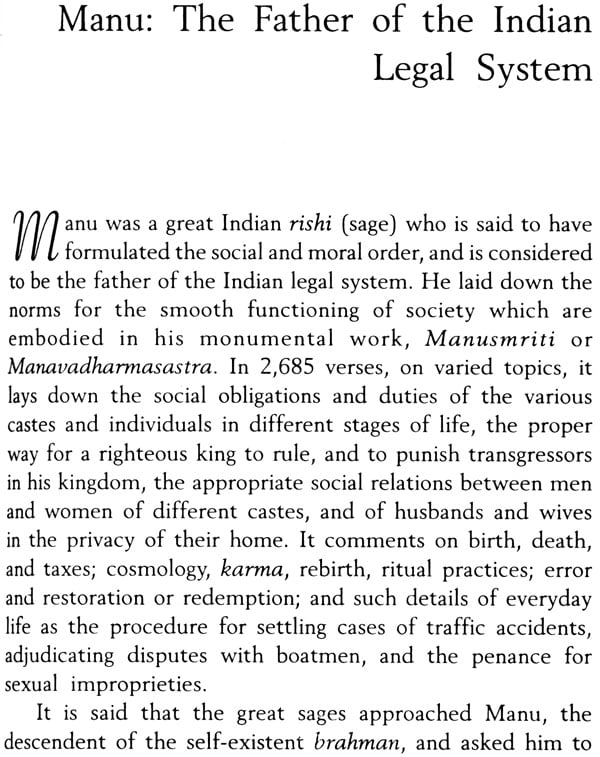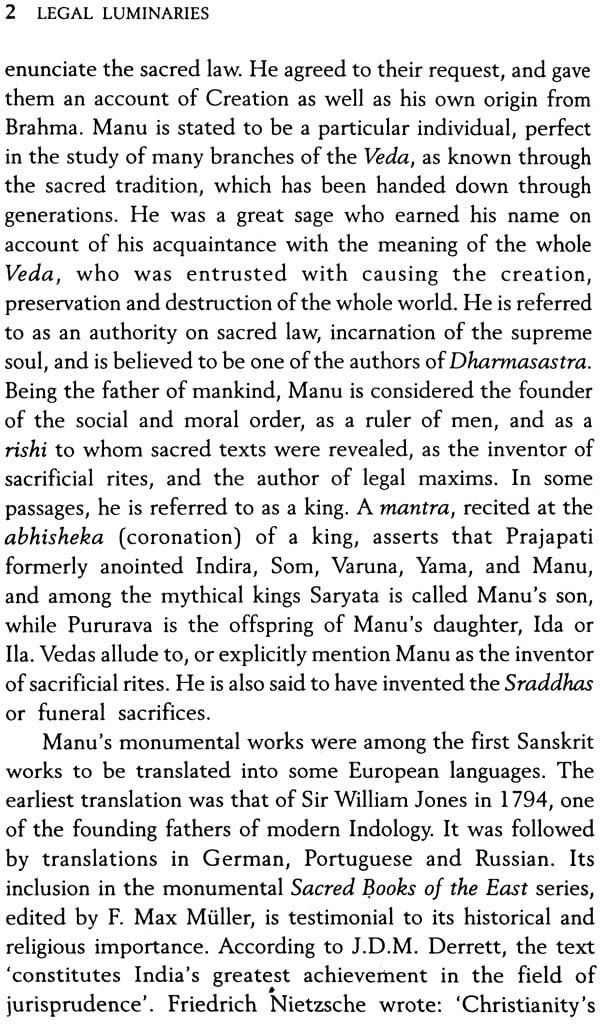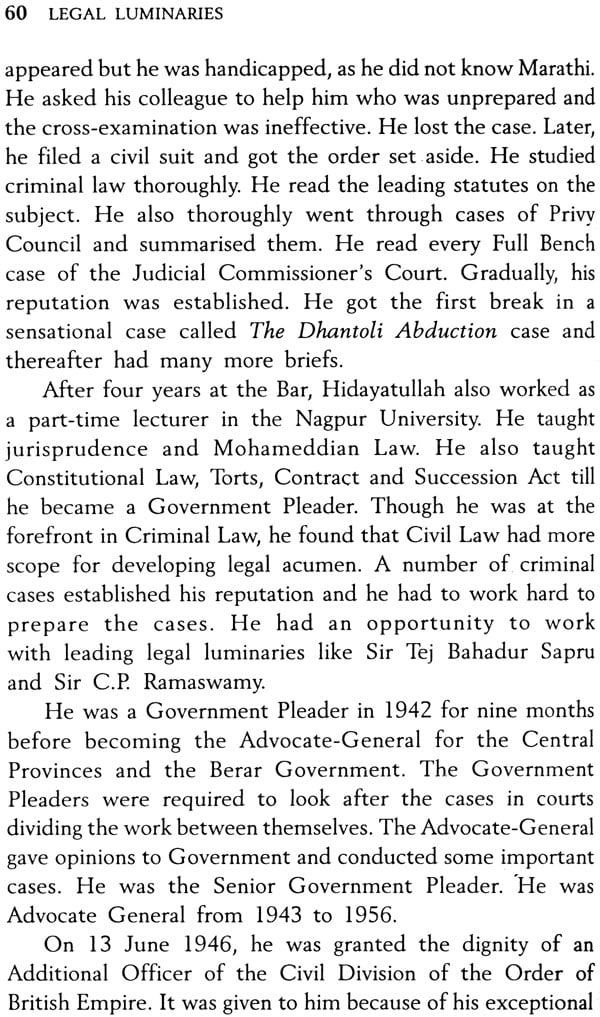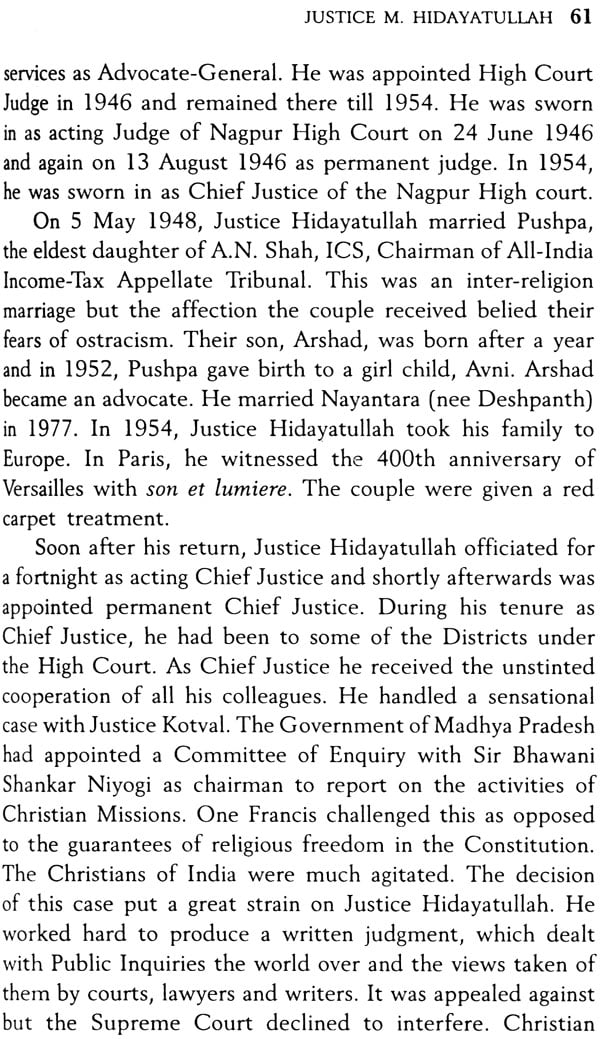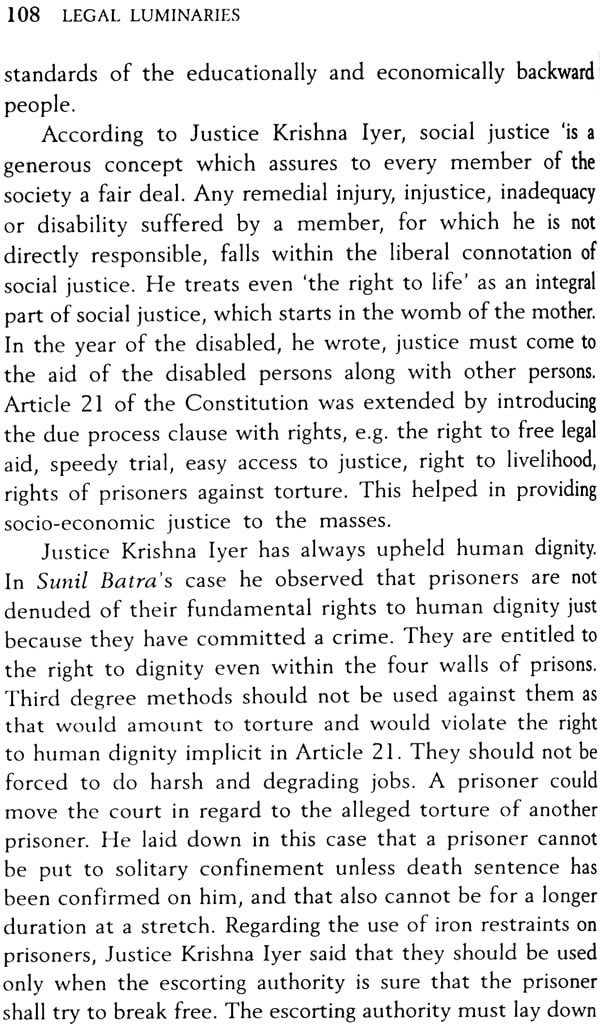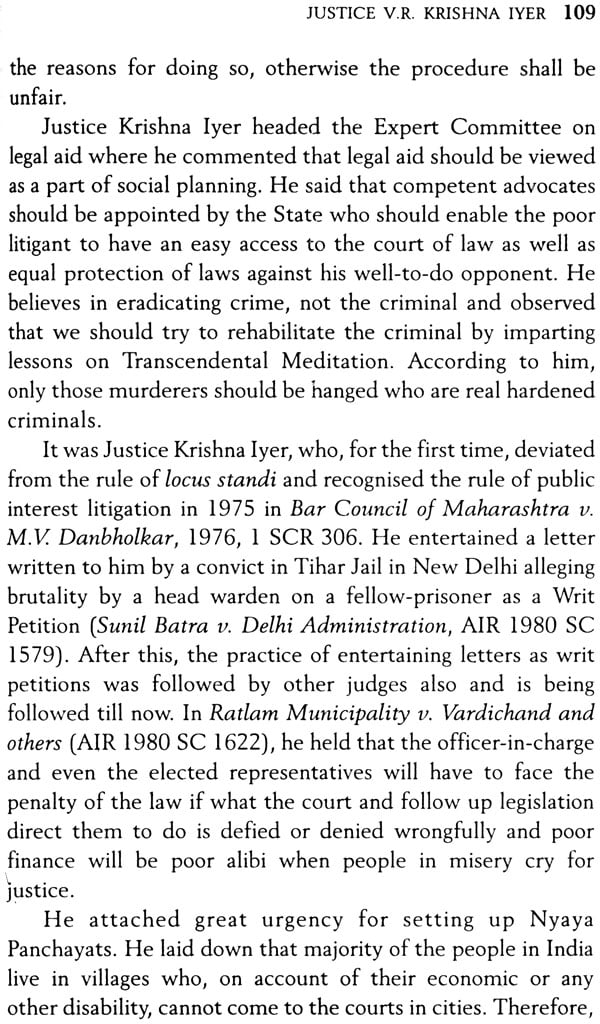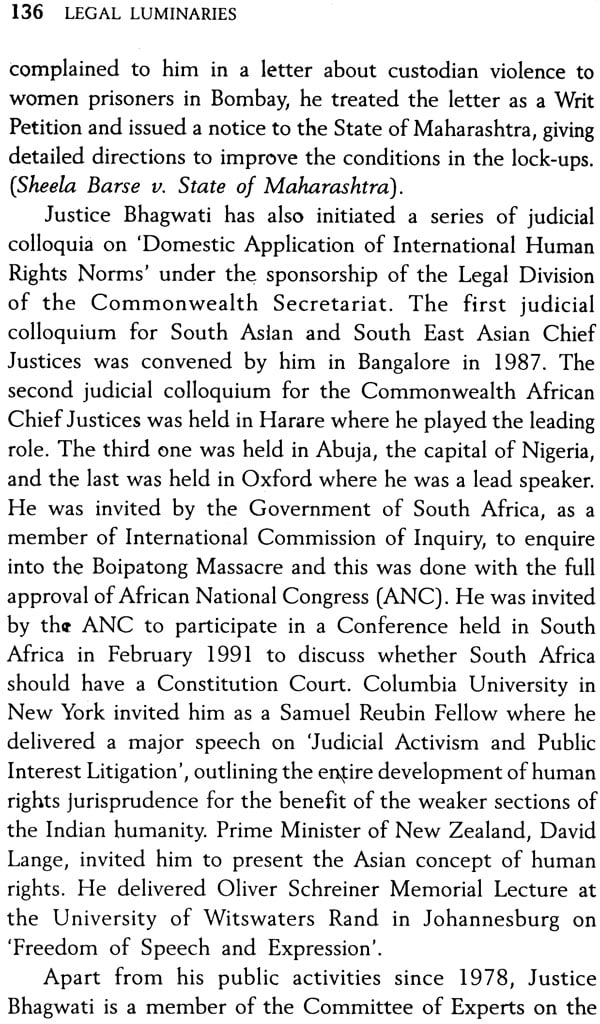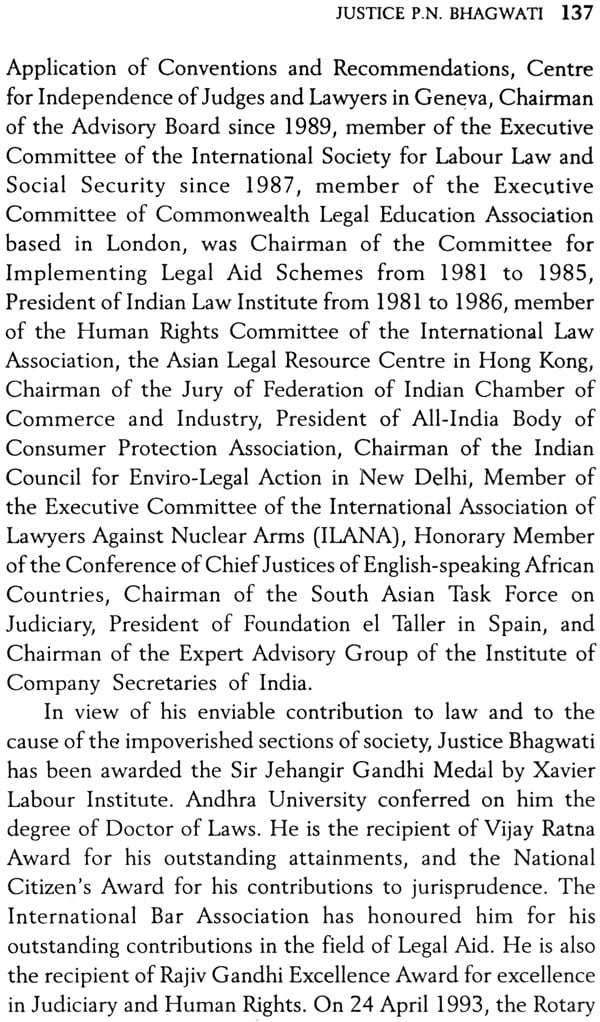
Eminent Indians: Legal Luminaries
Book Specification
| Item Code: | IDI958 |
| Author: | M. L. Ahuja |
| Publisher: | Rupa Publication Pvt. Ltd. |
| Language: | English |
| Edition: | 2006 |
| ISBN: | 9788129109743 |
| Pages: | 140 |
| Cover: | Paperback |
| Other Details | 8.5" X 5.5" |
| Weight | 190 gm |
Book Description
Back of the Book:
Legal administration in India has undergone substantial changes through the ages. Its contribution has been especially significant in upholding the dignity of the citizens and their democratic norms, especially in a pluralistic society like India. This book, Eminent Indians: Legal Luminaries, while tracing the developments in law ever since Manu formulated the Code of Conduct for intelligent exercise of the will in conformity with the will of God, brings to focus the contributions of ten great legal luminaries. To ensure justice, apart from judges, lawyers are the most important officers of the court. Therefore, apart from judges, it also enunciates the Code of Manu and examines the role of two leading lawyers, M.C. Setalwad and Nani Palkhivala.
Other legal luminaries included in this book are: Justice M.C. Chagla, independent India's first Chief Justice of Bombay High Court; Justice P.B. Gajendragadkar, the former Chief Justice of India who believed that 'liberty' is an essential element in the conduct of civilised social life and that law sustains liberty; Justice M. Hidayatullah, former Chief Justice of India; Justice H.R. Khanna, a senior Judge of the Supreme Court known for his bold judgement in Kesvananda Bharti's case and Prime Minister Indira Gandhi's election appeal; Justice Nagendra Singh, a successful judge of the International Court of Justice who brought to the notice of the Western world the laws of Aryavarta; Justice V.R.Krishna lyer, senior judge of the Supreme Court who provided with free opportunity to unfold one's total capabilities; and Justice P.N. Bhagwati, former Chief Justice of India, known for innovating the concept of Public Interest Litigation and Legal Aid Programme.
About the Author:
Recipient of the Janseva Sadbhavana Award, M.L.Ahuja, M.A, Dll, DCS, is the author of over twenty books now. He is associated with book publishing and distribution of books and journals. He has travelled extensively both within and outside India. He has presented a number of papers at several national and international seminars. He has also contributed a number of articles, which are mostly on publishing and marketing of books and journals.
Law, which implies the framing of rules and regulations by the State to ensure peace and tranquility, is the backbone of a civilised society. According to Kautaliya, law is the eternal order and it is justice and duty. In ancient times, laws were made to synchornise with people's needs and economic condition. Law was then a royal command enforced by sanction and the regulating factor of all types of human activities. Maintenance of law requires a systems of legal administration or judiciary to implement laws.
It is generally presumed that the earlier form of punishment for acts, which can be called criminal, was private revenge. Retaliation for an inflicted injury was the personal affair of the victims or their surviving kin and the community did not usually interface. Private revenge often led to blood feuds between families, clans or tribes. Feuds, particularly between powerful families of different communities, continued to be one of the causes of war. Religious leaders often played the role of moderators of conflicts and punishers of offences. The threat of divine revenge was used against criminals at a time when the fear of gods and supernatural forces was considerable. Magic and religion were found to be effective socio-political tools. Acts that could be said to have adversely affected the well-being of the community were considered affronts to the gods, and calamities and disasters, such as the plague, earthquakes, etc., were seen as expressions of divine anger. If the punishment meted out to wrongdoers was commensurate with the crime they had committed, it was thought to lessen the god's fury. Manu's code specified that judge's function was to probe the heart of the accused and of witnesses by studying their posture, mien and changes in voice and expression.
| Preface | ix | |
| Manu: The Father of the Indian Legal System | 1 | |
| Motilal C. Setalvad | 16 | |
| Justice M.C. Chagla | 30 | |
| Justice P.B Gajendragadkar | 43 | |
| Justice M. Hidayatullah | 58 | |
| Justice H.R. Khanna | 72 | |
| Justice Nagendra Singh | 85 | |
| Justice V.R. Krishna lyer | 99 | |
| Nani Palkhivala | 112 | |
| Justice P.N. Bhagwati | 125 | |
| Bibliography | 139 | |
